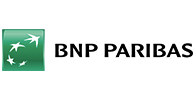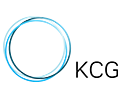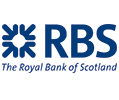6 Price Action Retracement Entry Types You Need to Know
Master 6 Price Action Retracement Entry Types for Effective Forex Trading
Price action trading is a vital skill for forex traders. By observing and interpreting raw price movements, traders can identify retracement entry points that align with the prevailing trend. Understanding these retracement types allows traders to time their entries more effectively, improving their overall strategy.
In this article, we’ll dive into six key price action retracement entry types that every trader should know.
What is Price Action Retracement Trading?
Price action retracement trading involves identifying temporary pullbacks within a dominant trend to optimise entry points. Unlike trend reversals, retracements are minor corrections that allow traders to align with the overall market momentum.
These retracements often reflect natural market behaviour, such as profit-taking or temporary resistance, and present low-risk, high-reward opportunities for traders.
6 Price Action Retracement Entry Types
1. Pin Bar Retracement
The pin bar is a classic candlestick pattern used in price action trading. It features a long tail, or wick, with a small body, signalling a rejection of a price level.
- Bullish Pin Bar: Occurs in an uptrend, indicating buyers are regaining control after a temporary dip.
- Bearish Pin Bar: Found in downtrends, showing sellers are taking charge after a brief rally.
Traders can use the pin bar’s wick as an indicator of where the market is likely to reverse, entering trades as the trend resumes.
2. Inside Bar Retracement
An inside bar pattern occurs when the current candlestick’s range is entirely within the previous candle’s high and low. It signals market consolidation before the continuation of the prevailing trend.
- Entry Strategy: Place pending orders just outside the inside bar’s range. This ensures you catch the breakout once the market decides its direction.
Inside bars are highly effective in trending markets, helping traders minimise risk while maximising profit potential.
3. Fibonacci Retracement
Fibonacci retracements are among the most reliable tools for identifying potential entry points during pullbacks. These levels, including 38.2%, 50%, and 61.8%, act as support or resistance zones within a trend.
- Example: In a bullish trend, if the price retraces to the 61.8% Fibonacci level, traders can enter long positions, anticipating a continuation of the uptrend.
Combining Fibonacci levels with other indicators, such as moving averages, enhances accuracy and confidence in trade execution.
4. Moving Average Retracement
Moving averages (MAs) are widely used to smooth price data and identify dynamic support and resistance levels.
- 50-Day MA and 200-Day MA: These are popular choices among traders. When a retracement occurs and aligns with an MA, it often signals a continuation of the trend.
For example, in an uptrend, if the price retraces to the 50-day MA and rebounds, traders can use this as an entry signal.
5. Trendline Bounce Retracement
Drawing trendlines along significant highs or lows helps traders visualise the market’s direction and potential retracement points.
- Entry Strategy: When the price retraces and bounces off a trendline, it signals a strong continuation of the trend. Enter trades at the bounce point to maximise gains.
6. Break-and-Retest Retracement
This strategy involves waiting for the price to break a key support or resistance level and then retesting it as a new resistance or support level.
- Example: In a bullish trend, if the price breaks above a resistance level, it might retrace to test that level as new support. Traders can enter long positions upon confirmation of the retest.
Why Trading Retracements Is Essential
Mastering these retracement entry types helps traders:
- Identify optimal entry points with lower risk.
- Enhance profitability by aligning with prevailing trends.
- Manage risk effectively with tighter stop-loss levels.
How FXCG Supports Price Action Trading
FXCG, known as the best ECN broker, provides traders with the tools and resources to trade retracements effectively. Here’s how:
- Raw Spreads and Low Commissions: Maximise profits with competitive pricing.
- MetaTrader 4 Platform: Access advanced charting tools and indicators.
- Forex Demo Account: Practice trading strategies risk-free before going live.
- ECN Trading Infrastructure: Experience fast, reliable trade execution, ensuring you never miss critical retracement opportunities.
Conclusion
Understanding and applying price action retracement entry types can elevate your forex trading strategy. By mastering these techniques and leveraging FXCG’s advanced ECN trading platform, you can confidently navigate the forex market and improve your trade outcomes.
Ready to refine your strategy? Open an account with FXCG and start trading smarter today.
before: Retracements in Forex Trading: What You Need to Know


















